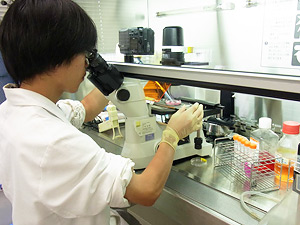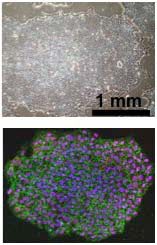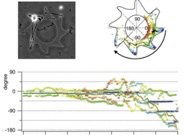Research
Stem Cell Technology

Kiyoshi Ohnuma
Associate Professor

Our research aims at developing micro devices for controlling the growth, movement and differentiation of embryonic stem (ES) and induced pluripotent stem (iPS) cells. These stem cells possess apparent contradictory abilities to differentiate into all cell types (flexibility) and to self-renew continuously (stability). We use molecular genetic manipulations, microcontact printing, and microfluidics, as well as serum- and feeder-free culture methods, to control ES/iPS cell-surrounding environment. Using these techniques, we have succeeded to track single stem cells to determine their cellular pedigrees. These investigations not only improve our understanding of the flexibility and stability of stem cells, but may provide novel stem cell-based systems for drug discovery.
- Microcontact printing to control cellular migration
- Cellular pedigree analysis of ES and iPS cells
- Serum-, feeder- and proteinase-free culture of human ES and iPS cells

Serum- and feeder-free culture of human iPS cells. Upper pannel: phase contrast micrograph. B: immunocytochmical staining of self-renewal marker (red: Oct3/4, green: ssea4, blue: dapi).

Cell migration control using micro pattern. Upper left: Neuronal PC12 cell line in a ratchet shaped micropattern. Trajectories (upper right) and time courses (lower) for neurite tips (marked by crosses) and centers of the cell bodies (solid lines).